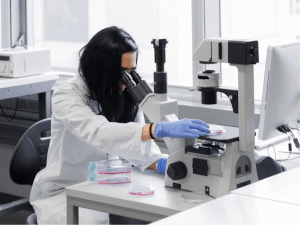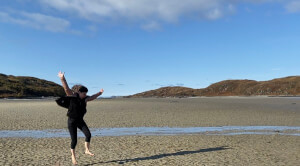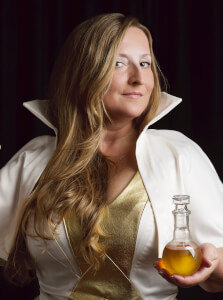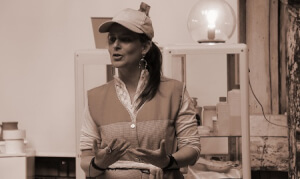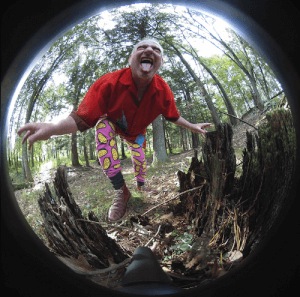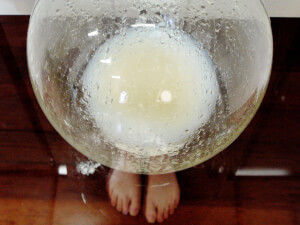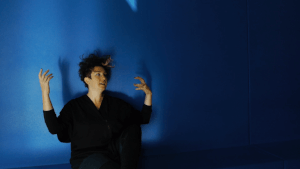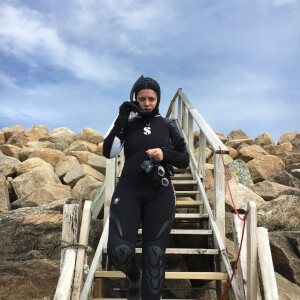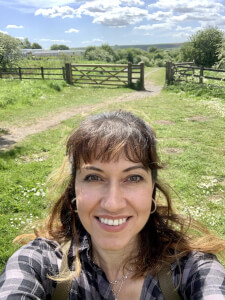Moderators: Louise Mackenzie and Ilke Turkmendag
What are the boundaries to the ways that we stake claim over human bodily material in biotechnological and artistic research? What are the decolonial and nonhuman contexts in which bodily material is accessed, used and consumed? How might these influence and challenge existing approaches to bodily material donation? Who owns bodily material once it has left the body? Who decides? How can art reach beyond current scientific conceptions of the biobank and cell/tissue donation? The historical context of body and tissue donation is deeply problematic, with patriarchal and colonial histories such as the UK’s rogue trade in cadavers (Burke and Hare), the US’ unregulated use of medical samples (Henrietta Lacks) and the contemporary illegal human organ trade (Moorlock, 2018). As practitioners working outside the conventional boundaries of scientific study learn the tools and techniques to extract and use bodily materials, they are also learning and challenging the procedures and processes. The artists in this panel all regularly use bodily materials in their practice. Approaching the above questions through the use of bodily fluids and cellular bodily materials, the panel will challenge the ethical and conceptual assumptions made in biotechnological research and reconsider where the boundaries of the body lie, what ‘authority’ research carries and what choices researchers make when using the bodies of others.
This panel originated from artist Louise Mackenzie’s ongoing research project, Offering the Body, in which she explores attitudes and approaches to the donation of bodily material in art practice. Mackenzie is recording a series of interviews with artists on these issues and for TTT2020, has prepared an edited video collage of her conversations to date with artists Tarsh Bates, Isabel Burr-Raty, WhiteFeather Hunter, Charlotte Jarvis, Hege Tapio, Miriam Simum and Theresa Schubert. This live panel is a further development of the research, in which artist Adam Zaretsky and bioethicist Ilke Turkmendag are invited to join the conversation (please note that Theresa Schubert is not available for the live discussion).
Art projects referenced:
Tarsh Bates
The Unsettling Eros of Contact Zones
Many of the foods we consume are produced with or contain a variety of microorganisms, including the basics: cheese, bread, milk, and beer. The artist offers bread leavened with Saccharomyces cerevisiae and Candida albicans, brie, blue cheese and hummus to share, inviting consideration of assumptions about microorganism, our bodies and the food we consume. All microorganisms used to leaven the bread are killed by the baking process, including the Candida, which is already present in or on most of us.
Link https://tarshbates.com/portfolio/t-he-unsettling-eros-of-contact-zones-2015/
Surface Dynamics of Adhesion
Encased in a series of acrylic boxes, living Candida albicans grows in a pattern adapted from the first drawing of the organism by Charles Philippe Robin in 1853 and reminiscent of those popular on the wallpaper of parlours and art galleries in Europe at the time. The Candida grows on blood agar, a nutrient source that contains the blood of the human artist. The acrylic containment frames the artwork as an un-still-life and minimises the risk of contamination or infection. Within this containment, the living Candida escapes the constraints of the patterning during the exhibition, disrupting attempts to discipline it.
Link https://tarshbates.com/portfolio/surface-dynamics-of-adhesion/
Isabel Burr-Raty
Beauty Kit - Eco Erogenous Para-Pharmaceutics
BEAUTY KIT is an ongoing project by the Belgian-Chilean artist Isabel Burr Raty, a hands-on research into the human body as a territory for sustainable agriculture. Isabel Burr Raty’s BKFF is a mobile farm where she and other females harvest their bodily juices to produce beauty care products, which are used for treatments and sold in her BK Spa & Shop and critically discussed in her BK Focus Group. Through a playful, embodied and participatory art practice, BEAUTY KIT tackles radical questions on ecology and exploitation, sexuality and agency.
Links:
Beauty Kit: https://www.isabel-burr-raty.com/beauty-kit
Female Farm: https://www.isabel-burr-raty.com/bkff
Beauty Kit Shop https://www.isabel-burr-raty.com/beauty-kit-shop
https://vimeo.com/465637578
https://www.youtube.com/watch?v=casxcVZgC6o
https://www.youtube.com/watch?v=K7nqE9QMbjQ
WhiteFeather Hunter
Mooncalf
Mooncalf is an exploration of the potentiality and development of menstrual serum for use in tissue culture, as well as multipotent stem cell isolation from menstrual blood.
Link: https://whitefeatherhunter.net
Charlotte Jarvis
In Posse
Throughout history, semen has been revered as a totem of literal and symbolic gendered potency. In Posse aims to rewrite this cultural narrative; to use art and science to disrupt patriarchy by making semen from “female” cells. In Posse is a Latin term which means ‘before we are born’. It refers to something possible but which is yet to be called into existence. In Posse is striving for a form of technological, biological and creative activism.
Link: https://cjarvis.com/in-posse/
Louise Mackenzie
Offering The Body
Set in the context an Edinburgh anatomy lab, Offering The Body is a performance, in development, that questions historical and anthropocentric assumptions in biotechnology by asking whether it is right for those in positions of authority to impose their will on the bodies of others.
Link: https://www.loumackenzie.com/offering-the-body
Theresa Schubert
mEat me
mEat me asks for a re-evaluation of our dealings with meat, one’s own body and materiality in times where technology has entered every part of our society and finally also made our bodies reconstructable, as well as the ethical aspect of laboratory processes.
Link: http://theresaschubert.com/artworks/art/meat-me/#images-videos
Miriam Simun
Human Cheese
Human cheese illustrates a story of multispecies collaborations – complex patternings of entangled agents – among mammals, microbes, and other companion species. Milk is a tricky substance – entangled with bodies and environments where it originates. Steering clear of chemical toxins, and deadly microbial agents, requires a real commitment to understanding exactly where this food substance comes from.
Links: https://www.multispecies-salon.org/simun/
https://www.theglobeandmail.com/life/the-hot-button/human-cheese-sustainable-or-sick/article610945/
Training Transhumanism
Training Transhumanism (I WANT TO BECOME A CEPHALOPOD) is a PSYCHO- PHYSICAL training regimen for human evolution {{enhancement, extension, transformation}} in the face of rapid ecological and technological change. A series of exercises train new sensitivities and capabilities within the existing human biological system, based on the #role-model-organism# of the cephalopod. The regimen focuses on the internal capacity building of three key cephalopodic traits within the human: embodied and tactile intelligence, shape-shifting camouflage and distributed intelligence.
Links: https://octopus-evolution.tumblr.com/
High res photos https://www.multispecies-salon.org/simun/
Hege Tapio
HUMANFUEL
Humanfuel started out first as a webpage presenting the Humanfuel product made from the fictitious Lithuanian based company Lipotechnica. The artist was later invited to produce the actual biofuel in 2016 for the exhibition connected to the HYBRID MATTERs Nordic Art & Science Network. The art project Humanfuel yielded in total about 800ml of what could safely be called the world’s most exclusive biofuel. Coming from the oil capital of Norway, Stavanger – this has been her contribution and way of commenting on how we extort the resources around us. Furthermore, the work incited reflection around the ethical aspects of the project, on how we treat other living beings and how we regard ourselves as part of the world we live in. HUMANOIL is a follow up from the previous Humanfuel project and part of a series of artistic explorations to what Tapio has claimed as “extreme selfmining”, reminding us that we also pose as a resource.
Links:
Adam Zaretsky
mutaFelch
In the case of humans as GMOs, the sites of contention are based on human anatomy and, in particular, hereditary cascade entry points for novel gene constructs. The questions are simply: Where to get genes in? How to get genes in? Which genes to pick and why? Who is produced? In mutaFelch- a DIY (Do It Yourself) biolistic genegun is used to bombard a mixture of human sperm, blood and shit with raw hybrid DNA soaked in gold nanocarriers.
Links:
http://www.sciartinitiative.org/gut-instinct.html
https://archive.org/details/MutaFelch/FINzaretsky_mutaFelch_Vimeosize2.mp4
Watch Additional Interview Content: https://vimeo.com/473223354/64b1551796

